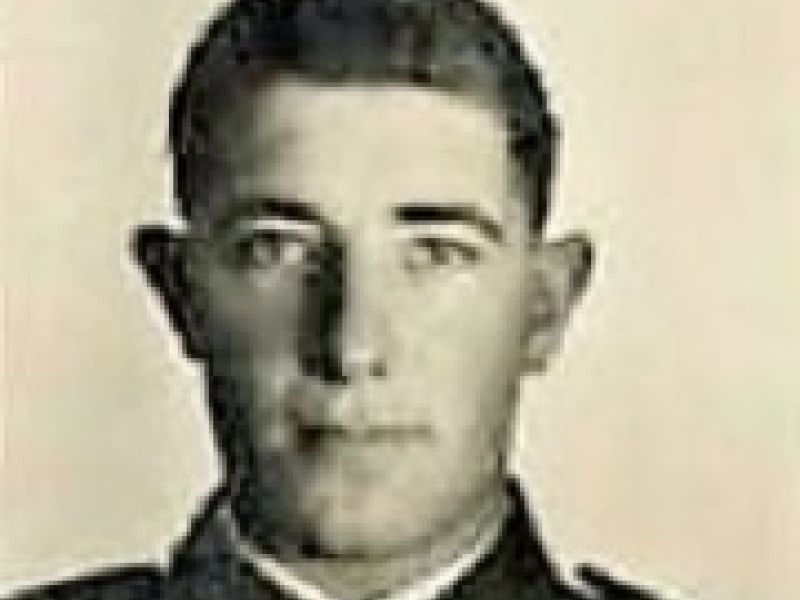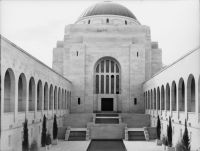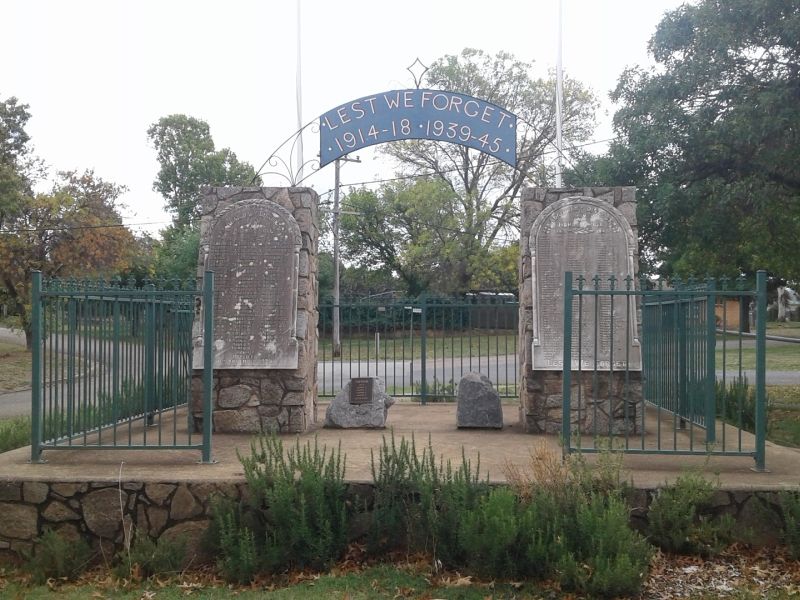Private Wallace Lanvel Eccleston, 2/17th Australian Infantry Battalion
Wallace Eccleston was born on 13 November 1919 in Adaminaby, New South Wales, the son of Arthur and Amelia Eccleston. As a young man, Wallace moved to Wagga Wagga, where he worked as a labourer.
In July 1940, Eccleston volunteered for service in the second Australian Imperial Force. He undertook his initial training at the Wagga Wagga showgrounds, before moving to Goulburn to continue training. His older brother Henry was also training at Goulburn at this time. They both had a short period of leave over Christmas, and then sailed from Sydney to the Middle East in February 1941.
Eccleston joined his unit, the 2/17th Australian Infantry Battalion, in April 1941. The unit was in the process of digging in at the Libyan port city of Tobruk. German and Italian forces laid siege to Tobruk, a situation that lasted for over eight months. Eccleston’s brother Henry had also joined the 2/17th Battalion, and the two men were together during the siege. In October, having successfully defended the city, the Australians were relieved by the 70th British Division.
Eccleston spent a brief period in hospital recovering from illness in December, and then returned to his unit. The 2/17th Battalion carried out guard duties and training in Palestine, Lebanon, and Syria during the first half of 1942. In July, the battalion travelled to Alexandria, Egypt, and from there deployed west of the city in readiness for a showdown with the Axis forces.
The British-led Allies had been forced to withdraw from Libya due to the advance of Axis forces. From the middle of 1942, they defended a line between the Mediterranean Sea in the north and the impassable Qattara Depression in the desert to the south. Allied units took up positions around the tiny desert locality of El Alamein. The 9th Australian Division, of which the 2/17th Battalion was a member, was on the right flank of the Allied position, on the coast.
In September, Eccleston was evacuated to hospital again, this time with hepatitis. He recovered over a period of four weeks, and re-joined his battalion on 23 October. That night, at about 10 pm, the Allies attacked, beginning the battle of El Alamein. The battle was to continue for two weeks.
During the fighting on 30 October 1942, Eccleston was struck in the head by gunfire, and died of his wounds later that day. He was 22 years old.
Wallace Eccleston is buried in Alexandria (Hadra) War Memorial Cemetery in Egypt, alongside more than 1,300 burials of the Second World War. His gravestone reads, “Bravely he did his duty”.
Wallace’s older brother Henry was also wounded in the battle of El Alamein. He had died of wounds three days before his brother’s death, and is buried in the same cemetery as his brother.
- AWM Roll of Honour https://www.awm.gov.au/collection/R1707233

 Australian War Memorial
Australian War Memorial